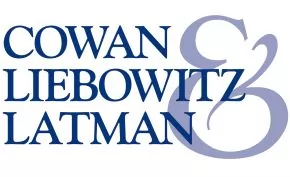If you are thinking of registering a variation of a famous trademark for use as your own mark, think again.
John K. Muntean, an individual from Duluth Georgia, filed an intent to use application to register JUST BELIEVE IT as a service mark for business consultation services in the fields of fundraising and the sale of goods for resale by others in their charitable fundraising.
Nike, Inc. opposed that application. Nike alleged both a likelihood of confusion and dilution by blurring based on its registered mark JUST DO IT, which it had used since 1989 for a broad range of goods and charitable activities.
The Trademark Trial and Appeal Board (TTAB) sustained the opposition on both likelihood of confusion and likelihood of dilution grounds, and refused registration to JUST BELIEVE IT.
Applicant's Admissions
Applicant admitted that Nike is a leading provider of a broad range of goods and services; owns registered and common law rights in JUST DO IT (whether or not followed by a period); has priority; and that Applicant was aware of Nike's mark at the time he filed his application.
Nike's Fame
Applicant also did not dispute that Nike's JUST DO IT mark is famous. The TTAB took this even further, saying "It would be an understatement to deem Opposer's JUST DO IT mark merely "very strong." It found that this slogan enjoyed the highest level of fame and the broadest scope of protection against confusion.
The TTAB based this finding on Applicant's admission of fame, evidence of magazine studies describing Nike's slogan as "one of the most famous and easily recognized slogans in advertising history,' a third party's survey in which 79% of respondents correctly identified the slogan with Nike, many millions of Nike social media followers, printed publications revealing public perceptions linking the slogan to Nike, and a prior TTAB finding that JUST DO IT was famous. Nike, Inc. v. Maher, 100 USPQ2d 1018, 1024-27 (T.T.A.B. 2011).
Applicant's Arguments
Nike's Mark is Weak. Applicant argued that 13 other marks were closer to Nike's mark than Applicant's mark and had been registered alongside Nike's mark without incident. But the TTAB noted that six of these registrations had been cancelled and therefore were not appropriate evidence. The other registered marks were for unrelated goods or services except for one, and the TTAB found that the existence of only one relevant registration did not establish that JUST DO IT was a weak mark.
Applicant's Services are Different. Applicant also argued that its business consultation services in the field of fundraising differed from Nike's consumer products. But the TTAB noted that, given Nike's involvement with numerous community initiatives and other charitable causes, and the fame of its mark, it is possible consumers would think Applicant's services were related to Nike.
The Marks are Different. Applicant argued that the word BELIEVE created a commercial impression different from DO. The TTAB sided with Nike in deciding that both marks consist of three words beginning with JUST and ending with IT, and that both marks conveyed a command. The TTAB also stated that "action and belief" are intertwined concepts. That Nike sometimes used a period after JUST DO IT was a minor punctuation difference that did not distinguish the marks from each other.
These likelihood of confusion findings also supported the TTAB's finding of a likelihood of dilution by blurring, in which a consumer is immediately reminded of the famous mark and associates the junior party's mark with the owner of the famous mark. The TTAB noted that Nike generally declined permission for third parties to use marks in the form "JUST___IT," and vigorously enforced its rights through numerous cease and desist letters, scores of opposition and cancellation proceedings, and civil litigation.
Nike, Inc. v. John K. Muntean, Opposition No. 91247956 (T.T.A.B. September 10, 2020).
Author's Note: Although few marks are as famous as Nike's JUST DO IT mark, this case illustrates the broad scope of protection the TTAB gives to famous marks when registration is sought for variations of such marks even as applied to goods or services that arguably are unrelated.
It is tempting to think you can modify an existing famous mark and thereby enjoy its repute without infringement. You would do well to resist this temptation because it may turn out to be fruitless and expensive.
The content of this article is intended to provide a general guide to the subject matter. Specialist advice should be sought about your specific circumstances.

